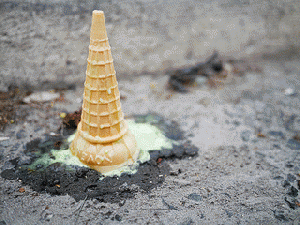The heat is on ice cream.
What is this country coming to, many are thinking, when you can't even enjoy a simple ice cream bar without worrying that you're going to become terribly sick, or even die from listeria contamination?
In a span of a few months, five ice cream companies have recalled potentially tainted products. Late last year, it was Snoqualmie Ice Cream and Pink's Ice Cream out of Washington state, followed by Full Tilt Ice Cream, also of Washington--all based on the possibility of listeria monocytogenes in their ice cream and production facilities.Then it was Blue Bell Creameries of Texas, the third-largest producer nationally, in which three people died from listeria monocytogenes in its ice cream (along with at least seven other illnesses, according to the U.S. Centers for Disease Control).
Most recently, Jeni's Ice Cream of Ohio decided to do a recall and shut down shops after a U.S. Department of Agriculture test found listeria monocytogenes in its ice cream.
Are these indicative of a larger problem, or just an unfortunate cluster of bad luck? If you read reports from The Center for Science and the Public Interest, a nonprofit organization, you could make either case. In a 2009 report, it included ice cream as one of America's ten most dangerous foods, citing nearly 75 outbreaks in the 20 years from 1990 to 2009. "These scoops can occasionally carry a load of dangerous bacteria," it said. (It also included another dairy product in its top-ten list--cheese.)
But then, in a 2014 report, it labeled dairy as one of our safest food categories. ("Pound-for-pound, seafood is the riskiest food, followed by poultry; fruit and dairy are the safest foods," CSPI concluded.)
The natural tendency when there are product recalls and illnesses from a particular food is to demand that government regulators DO SOMETHING. The reality is that the contradictions persist for pretty much every logical action the regulators might take:
More mandated testing. One seemingly obvious lesson seems that we should do more testing of dairy products for listeria monocytogenes than the occasional random testing that now occurs. Unfortunately, the presence of pathogens doesn't necessarily equate with the development of illnesses.
Part of the problem is that trying to find the pathogens in food that will cause disease isn't unlike trying to find the needle in the proverbial haystack. The U.S. Food and Drug Administration spent much of 2014 doing what it called a "pilot testing program" of more than 1,600 samples of raw milk cheese from dozens of producers in the U.S. as well as producers from nearly 20 other countries. It found listeria in the raw-milk cheese of only one American producer, so far as is known, and forced that producer to recall all the cheese; no illnesses were reported, even though much of the cheese had almost certainly been consumed before the recall. (The FDA also found listeria and salmonella in five imported cheese samples, and no illnesses were reported in those cases as well.)
Tighten the regulations. The U.S. actually has the tightest regulations in the world when it comes to listeria monocytogenes in foods--a zero tolerance policy. Thus, the presence of a single cell of listeria is enough to shutter a food producer, even if no illnesses have occurred.
Because the presence of just a few cells of listeria monocytogenes doesn't usually lead to illness, most First World countries, including Canada and members of the European Union have adopted policies whereby they accept the presence of small amounts of listeria without shutting food producers.
Do quicker recalls when pathogens show up. No matter how quickly a company orders a product recall, the reality is that most food is consumed shortly after it is purchased. All the ice cream recalls this year very likely came after much of the questionable ice cream had been eaten.
More aggressive anti-pathogen treatments of milk. Pasteurization, of course, is the main treatment of milk to prevent pathogens. If it works so well, some have wondered, why not do more of it, perhaps heat the milk even further than the 165 degrees regular pasteurization takes place at.
Indeed, researchers from Cornell University last year threw cold water on that idea in a paper considering the public health effects of raising the pasteurization temperature about 10 per cent, as a way to counter possible bioterrorism. Its conclusion? --annual listeriosis deaths from consumption of this milk would increase from 18 to 670, a 38-fold increase""
(Note: You can view every article as one long page if you sign up as an Advocate Member, or higher).






